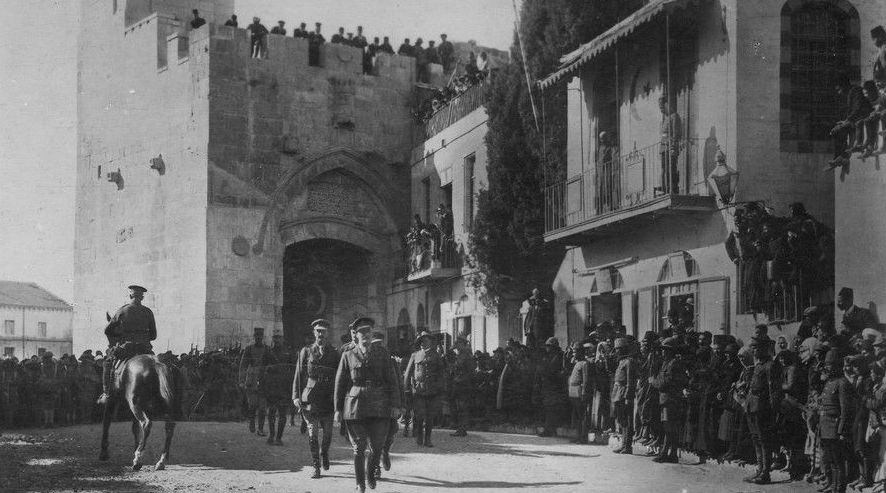Child and Nation in Early Republican Turkey
with Yasemin Gencer
hosted by Chris Gratien and Emily Neumeier
Following the World War I period, the founders of a new Turkish Republic sought to define and legitimize the new order as a break with the Ottoman past. In this episode, Yasemin Gencer explains the ways in which notions such as childhood were used to construct the image of a renewed Turkish society in the nationalist press during the early years of the Republican period.
Yasemin Gencer is a PhD candidate at Indiana University studying Art History. (see academia.edu)
Chris Gratien is a PhD candidate in the Department of History at Georgetown University. (see academia.edu)
Emily Neumeier is a PhD student of Ottoman art history at the University of Pennsylvania (see academia.edu)
Emily Neumeier is a PhD student of Ottoman art history at the University of Pennsylvania (see academia.edu)
iTunes
Citation: "Child and Nation in Early Republican Turkey," Yasemin Gencer, Chris Gratien, and Emily Neumeier, Ottoman History Podcast, No. 102 (April 19, 2013) http://www.ottomanhistorypodcast.com/2013/04/childhood-family-press-turkish-nationalism-republic.html.
SELECT BIBLIOGRAPHY
 |
| Chris Gratien and Yasemin Gencer / Kurtuluş, Istanbul |
Anderson, Benedict. Imagined Communities: Reflections on the Origin and Spread of Nationalism. London and New York: Verso, 2006.
Breuilly, John. Nationalism and the State. Manchester: Manchester University Press, 1993.
Brummett, Palmira J. Image and Imperialism in the Ottoman Revolutionary Press, 1908-1911. Albany: State University of New York Press, 2000.
Cristi, Marcela. From Civil to Political Religion: The Intersection of Culture, Religion and Politics. Ontario: Wilfrid Laurier University Press, 2001.
Çeviker, Turgut. Gelişim Sürecinde Türk Karikatürü-III. Istanbul: Adam (Anadolu) Yayınları, 1991.
Göçek, Fatma Müge, ed. Political Cartoons in the Middle East. Princeton: Markus Weiner Publishers, 1998.
Karpat, Kemal H. "Historical Continuity and Identity Change or How to be Modern Muslim, Ottoman, and Turk." In Ottoman Past and Today's Turkey, ed. Kemal Karpat, 1–28. Leiden, Boston, and Köln: Brill, 2000.
Robinson, Kathryn. “Families: Metaphors of Nation (Overview).” In Encyclopedia of Women and Islamic Cultures, vol. 2, Family, Law, and Politics, ed. Suad Joseph, 154–60. Leiden: Brill, 2005.
Sönmez, Cemil. Atatürk’te Çocuk Sevgisi. Ankara: Atatürk Araştırma Merkezi, 2004.
Ünder, Hasan. “Atatürk İmgesinin Siyasal Yaşamdaki Rolü.” In: Modern Türkiye’de Siyasi Düşünce: Kemalizm, vol. 2. Istanbul: İletişim Yayınevi, 2001.
“The Republic is Walking!” Karagöz (no. 1650, p. 1), 9 January 1924.
“Ottoman Empire vs. Turkish Republic,” Akbaba (no. 199, p. 1), 30 October 1924.
“When I Grow Up,” Akbaba (no. 407, p. 4), 28 October 1926.
“Our Father is Coming!” Cumhuriyet (no. 1128, p. 1), 1 July 1927.
“We Are Saved,” Akbaba (no. 614, p. 1), 29 October 1928.
 |
| “The Republic is Walking!” Karagöz (no. 1650, p. 1), 9 January 1924.Source: Yasemin Gencer |
 |
| “Ottoman Empire vs. Turkish Republic,” Akbaba (no. 199, p. 1), 30 October 1924.Source: Yasemin Gencer |
 |
| “When I Grow Up,” Akbaba (no. 407, p. 4), 28 October 1926.Source: Yasemin Gencer |
 |
| “Our Father is Coming!” Cumhuriyet (no. 1128, p. 1), 1 July 1927.Source: Yasemin Gencer |
 |
| “We Are Saved,” Akbaba (no. 614, p. 1), 29 October 1928. Source: Yasemin Gencer |










Comments
Post a Comment
Due to an overwhelming amount of spam, we no longer read comments submitted to the blog.